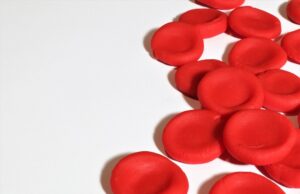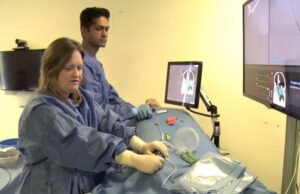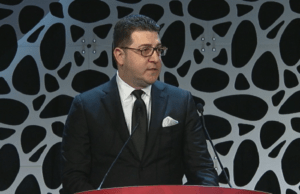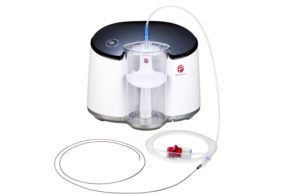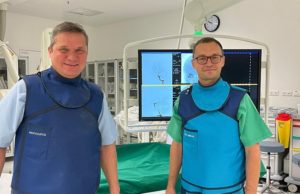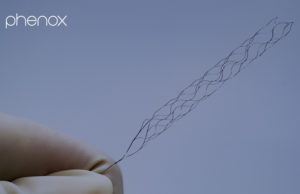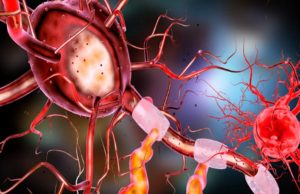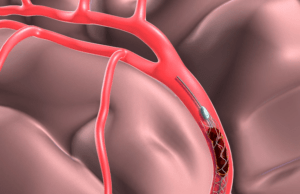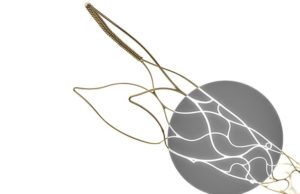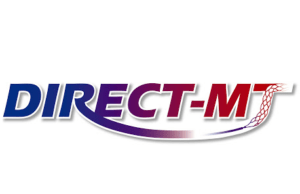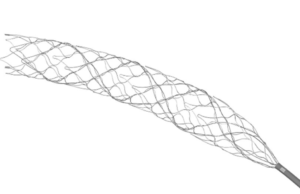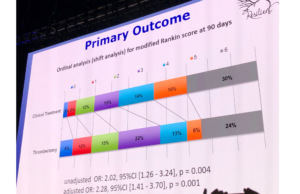Tag: mechanical thrombectomy
Early technique switches “should be contemplated” following failed thrombectomy attempts
A retrospective analysis including data from close to 3,000 stroke patients has concluded that early changes in mechanical thrombectomy strategies may be associated with...
The clinical trends driving innovation in stroke care
How is innovation in stroke care guided by contemporary clinical trials? This was the question NeuroNews put to Atul Gupta, the Chief Medical Officer...
Trackability and tip durability among key benefits of new CEREGLIDE 71...
NOTE: This video is ONLY available to watch in selected countries and geographies
Edgar Samaniego (University of Iowa, Iowa City, USA) discusses his experiences...
Research, training and industry all key to better thrombectomy care in...
This advertorial is sponsored by Medtronic.
Late last year, on 24 November, a decade’s work from a passionate group of physicians bore fruit, with the...
Transradial achieves non-inferiority but procedural delays may mean femoral access remains...
In stroke patients undergoing a mechanical thrombectomy procedure, access via the radial artery may be non-inferior to access through the femoral artery in terms...
One-year TESLA and SELECT2 data favour thrombectomy in large-core stroke patients
One-year follow-up data from two randomised controlled trials (RCTs) evaluating mechanical thrombectomy in patients with ischaemic strokes caused by large-core infarct volumes have demonstrated...
ASTER2 analysis links combined thrombectomy approach to improved reperfusion in proximal...
A subgroup analysis of the ASTER2 clinical trial has found that a first-line combined thrombectomy approach, which involves using contact aspiration and a stent...
ZODIAC trial reveals clinical benefits of zero-degree head positioning prior to...
Laying large vessel occlusion (LVO) ischaemic stroke patients flat with their heads at a zero-degree angle prior to a mechanical thrombectomy procedure has resulted...
Stroke experts divided over concluding messages from SEGA trial results
The closing weeks of 2023 saw fresh findings comparing general anaesthesia (GA) to sedation in stroke thrombectomy disclosed for the first time, with leading...
Phil White
Phil White’s career as a physician and researcher has seen him play a role in numerous major stroke trials, and serve as an educator...
Rescue stenting shows good outcomes among Middle Eastern, African and Asian...
Rescue stent placement following a failed thrombectomy procedure has demonstrated “good outcomes” and a low risk of clinically significant bleeding in a multiethnic cohort...
Q’Apel Medical launches new-generation Hippo aspiration system for stroke thrombectomy
Q’Apel Medical has launched a new-generation aspiration technology, the 072 Hippo aspiration system, which has been developed for patients suffering from a stroke due...
Stroke thrombectomy gains approval from Brazilian health ministry in “historical milestone”
A “historical milestone” for stroke patients in Brazil was achieved recently, with the country’s Ministry of Health (MOH) publishing Order 1.996/2023 on 24 November...
Endovascular therapy under general anaesthesia linked to improved functional outcomes versus...
The multicentre, randomised SEGA trial has found that acute ischaemic stroke patients who receive endovascular therapy (EVT) under general anaesthesia experience better functional outcomes...
TENSION results show improved functional outcomes and reduced mortality with stroke...
New results from the TENSION study—presented recently at the 15th World Stroke Congress (WSC; 10–12 October, Toronto, Canada) by Götz Thomalla (University Medical Center...
Striving for more distal guide-catheter placement is a “no-brainer” in stroke...
This advertorial, intended for US readers only, is sponsored by CERENOVUS.
“Going distally with guide catheters is more routine nowadays,” says Violiza Inoa (Memphis, USA),...
Remote teleproctoring helps neurointerventionists overcome wartime restrictions in Ukraine
Remote teleproctoring has demonstrated promising results in providing hands-on mechanical thrombectomy training and overcoming wartime migration restrictions in Ukraine, according to initial experiences published...
‘Minimal differences’ in clinical outcomes between stroke thrombectomy with or without...
There are likely to be minimal differences in clinical outcomes between acute stroke patients presenting directly to endovascular treatment centres who undergo mechanical thrombectomy...
Ameer Hassan
Having initially sought out a career in plastic surgery, Ameer Hassan (Harlingen, USA) switched gears to interventional neurology in 2005—a change of heart he...
Missing outcome data is common and ‘does not occur at random’...
The phenomenon of missing outcome data (MOD) within stroke registries of mechanical thrombectomy cases “is not a rare event and does not occur completely...
Systematic review and meta-analysis find stroke thrombectomy safe and effective in...
A study presented at last week’s Society of NeuroInterventional Surgery (SNIS) annual meeting (31 July–4 August 2023, San Diego, USA) noted that mechanical thrombectomy—in...
New eligibility criteria including large-core strokes could boost thrombectomy rates “dramatically”
A study presented on the first day of the 2023 Society of NeuroInterventional Surgery (SNIS) annual meeting (31 July–4 August, San Diego, USA) has...
Early administration of antiplatelets may improve post-thrombectomy outcomes in stroke patients
Administering antiplatelet medication within 24 hours of a mechanical thrombectomy procedure may help stroke patients recover more successfully and prevent high-risk individuals from experiencing...
Recruitment in iVascular’s SEMTIC study passes halfway point
iVascular has announced that the SEMTIC study, evaluating the safety and efficacy of its comprehensive stroke thrombectomy treatment, is one step closer to providing...
“No significant difference” between aspiration and stent-retriever thrombectomy in medium vessel...
When utilised as a first-line technique for medium vessel occlusion (MeVO) stroke, aspiration and stent-retriever thrombectomy have demonstrated “no significant difference” in imaging-related or...
Combined thrombectomy technique fails to demonstrate superiority over aspiration alone
New data from the VECTOR randomised controlled trial—presented at the European Stroke Organisation Conference (ESOC; 24–26 May, Munich, Germany)—have indicated that a mechanical thrombectomy...
Penumbra expands computer-aided thrombectomy offering with Lightning Bolt 7 launch
Penumbra has announced the US Food and Drug Administration (FDA) clearance and launch of Lightning Bolt 7, which the company claims is the most...
MR CLEAN-LATE trial finds endovascular therapy safe and effective in late-presenting...
Endovascular therapy (EVT) has been deemed safe and effective in patients with ischaemic stroke caused by an anterior circulation large-vessel occlusion (LVO) who present...
Penumbra launches new RED 43 reperfusion catheter for mechanical thrombectomy
Penumbra recently announced the launch of the latest addition to its RED family of catheter devices for mechanical thrombectomy, the RED 43 reperfusion catheter.
According...
New WIST guidelines seek to improve access and standardise training in...
A new set of guidelines intended to standardise and expand stroke thrombectomy training have been published simultaneously in Europe, in the journal Advances in...
First-pass effect or rule of three? Definition of procedural success remains...
While a number of companies in the neurovascular space have become increasingly focused on the ‘first-pass effect’ in mechanical thrombectomy treatments, many major clinical...
Paediatric case helps highlight benefit of ‘aspiration first’ in young stroke...
A unique case presentation at this year’s LINNC Americas Seminar (16–17 March, Miami, USA) saw Rafael de Oliveira Sillero (University of Texas Southwestern Medical...
Chest, Heart and Stroke Scotland applauds decision to reinstate “vital” thrombectomy...
The charity Chest, Heart and Stroke Scotland (CHSS) has voiced support for the Scottish government’s decision to reinstate “vital” funding of thrombectomy services across...
Lessons learned from establishing a 24/7 stroke thrombectomy service
Alongside his colleagues at the Barts Health NHS Trust, Levansri Makalanda (London, UK) was responsible for setting up the second ever 24/7 mechanical thrombectomy...
Study finds “dismally low” global access to thrombectomy and “enormous disparity”...
The Society of Vascular and Interventional Neurology (SVIN) has released its first global analysis of access to mechanical thrombectomy for the treatment of large...
US physicians publish “first reported use” of Indigo aspiration system for...
Physicians in the USA have published details of—to their knowledge—the “first reported use” of the Indigo aspiration system (Penumbra) to treat cerebral venous sinus...
Thrombectomy appears comparable to medical management in treating ACA occlusion stroke
Mechanical thrombectomy appears to be a safe and technically feasible treatment option for ischaemic strokes caused by primary isolated anterior cerebral artery (ACA) occlusions...
SELECT2 results support thrombectomy use in stroke patients with large infarct-core...
An international clinical study has found that patients experiencing a ‘large’ stroke—characterised by a greater infarct-core volume on imaging—had a dramatically better recovery after...
Blood pressure lowering after EVT “should be customised” owing to safety...
The administration of medications to lower systolic blood pressure in acute ischaemic stroke patients who have undergone a successful mechanical thrombectomy procedure—also known as...
Czech study finds thrombectomy and IVT rates “remained unchanged” during first...
A national study conducted by researchers in the Czech Republic has found that, while stroke admissions in the country declined during the first year...
Thrombectomy use rates underscore recent advances in Latin American stroke care
A systematic review of interventional acute ischaemic stroke treatments in Latin American countries has found that mechanical thrombectomy usage in these regions is “comparable...
ENCHANTED2/MT data indicate intensive blood pressure lowering “should be avoided” after...
Recently published data from the ENCHANTED2/MT study have shed new light on the safety and efficacy of more intensive versus less intensive blood pressure...
Imperative Care announces FDA clearance and initial cases with stroke-specific radial...
Imperative Care announced today that the US Food and Drug Administration (FDA) has finalised 510(k) clearance of its Zoom RDL radial access system—the company’s...
Stroke community intensifies efforts to tackle “unacceptable” disparities in thrombectomy access
A wealth of new data confirming the beneficial role mechanical thrombectomy can play in the treatment of acute ischaemic stroke came to light through...
Direct thrombectomy fails to show non-inferiority versus bridging therapy in early...
The international DIRECT-SAFE trial has produced results indicating that intravenous thrombolysis (IVT) plus mechanical thrombectomy—commonly referred to as bridging therapy—should continue to be recommended...
Cerenovus reveals positive stent-retriever thrombectomy outcomes within EXCELLENT registry
Cerenovus, part of Johnson & Johnson MedTech, has today announced positive primary outcomes from the real-world EXCELLENT registry, focused on stroke-inducing blood clot removal...
World Stroke Congress bolsters evidence on optimal thrombectomy and thrombolysis approaches
While much-needed improvements to existing triage and transport protocols for acute stroke patients were a leading topic of focus on World Stroke Day (29...
BAOCHE trial results supporting thrombectomy for basilar artery stroke published in...
Results from the BAOCHE randomised controlled trial (RCT), which found that the addition of thrombectomy to standard medical care within 6–24 hours in basilar...
Physicians should prioritise first-pass optimisation over speed in thrombectomy procedures
Achieving clot retrieval with the fewest possible number of passes is critical in mechanical thrombectomy, and may even hold greater importance than how quickly...
New data demonstrate effectiveness of Penumbra system and RED catheters for...
Penumbra today announced initial INSIGHT registry data showing that its RED reperfusion catheters were successful in removing all clot types—and, additionally, results of sub-analyses...
Imperative Care announces positive, single-centre data on distal occlusion stroke treatment
Imperative Care recently announced that new data evaluating the utility of its Zoom stroke solution were presented at the 16th congress of the World...
SNIS 2022: COVID-19 may increase stroke risk in younger patients and...
Stroke patients with COVID-19 are facing worse outcomes, and are often younger and healthier, according to research presented recently at the Society of NeuroInterventional...
AI-powered device delivers “amazing physiologic information” to guide thrombectomy treatments
The Clotild smart guidewire system (Sensome), which uses artificial intelligence (AI) to provide real-time insights on clot composition, is showing early promise in the...
First Emboguard experiences reveal “excellent trackability and ease of use” in...
Having been launched earlier this year, the Emboguard balloon guide catheter (Cerenovus) was recently used in mechanical thrombectomy procedures for the first time. David...
AHA statement highlights need for more data on sex differences in...
A new American Heart Association (AHA) scientific statement has highlighted the need for more data about sex differences in the use of and response...
Women less likely to return to work after severe stroke, new...
According to new research published in Stroke, about one third of people who had a severe ischaemic stroke—and underwent a mechanical thrombectomy to remove...
Study data indicate positive outcomes with “exciting new treatment option” in...
Data from a multicentre clinical study supporting the use of Anaconda Biomed’s Advanced Neurovascular Access (ANA) catheter system for treating ischaemic stroke have been...
Children with severe stroke may fare better if treatment includes mechanical...
Serious disability is six times more likely to be the result three months after stroke among children whose large-vessel stroke was not treated with...
Newer clot-busting medication may someday increase time window for stroke treatment
In a phase 2a clinical trial in China, the clot-busting medication tenecteplase has been shown to be effective in restoring blood flow to the...
Cerenovus launches Emboguard balloon guide catheter for acute ischaemic stroke
Cerenovus—a neurovascular firm that forms part of Johnson & Johnson Medical Devices Companies—has announced the launch of Emboguard, its next-generation balloon guide catheter to...
Mechanical thrombectomy shown to restore more function than medication alone following...
A new study from Japan has become the first randomised controlled trial (RCT) to demonstrate the effectiveness of endovascular mechanical thrombectomy procedures in patients...
Reducing disability and death: What is next for stroke triage and...
Michael Chen (Rush University Medical Center, Chicago, USA) discusses the growing awareness around the need for timely interventions in stroke care in the USA,...
Enabling new possibilities in stroke treatment with Stream technology
This advertorial is sponsored by Perflow.
The StreamTM family of products (Perflow) is a range of dynamic neurothrombectomy net devices designed to give physicians greater...
Time savings, cost reductions and improved patient outcomes all key benefits...
Artificial intelligence (AI) and the role it can play in improving acute ischaemic stroke care protocols took centre stage at the Barts Research and...
AURORA: Evidence in favour of thrombectomy beyond six hours strengthened by...
Evidence favouring endovascular therapy (EVT) in anterior circulation stroke patients presenting with reversible cerebral ischaemia in the later time window (beyond six hours) from...
Hispanic stroke patients experience poorer post-thrombectomy outcomes than white counterparts
A study conducted by neurology researchers at University of Texas Southwestern (UTSW) Medical Center has found lower-quality functional outcomes for Hispanic ischaemic stroke patients...
Increased experience associated with shorter procedure times and better reperfusion rates...
Increasing levels of experience in performing mechanical thrombectomies have been associated with shorter procedural duration and better reperfusion rates in a multicentre study—with the...
World Stroke Day 2021: Get Ahead of Stroke campaign pushes for...
On World Stroke Day—29 October 2021—physicians from the Get Ahead of Stroke campaign are urging lawmakers to update triage and transport protocols. They are...
Phenox expands acute ischaemic stroke portfolio with global launch of pRESET...
Phenox has added to its extensive technology portfolio with the introduction of the pRESET 6-50 mechanical thrombectomy device for the treatment of acute large...
North Carolina updates stroke triage and transport protocol
North Carolina has updated its emergency stroke care protocol—a move applauded by the Get Ahead of Stroke campaign. The protocol, which went into effect...
NeuroVasc announces enrolment of first patient in ENVI-SR mechanical thrombectomy system...
NeuroVasc Technologies has announced that the first patient has been treated in a pivotal randomised controlled trial (RCT) in China, which will evaluate the...
Direct mechanical thrombectomy fails to show non-inferiority compared with IV t-PA...
The preliminary results of the SWIFT-DIRECT (Solitaire with the intention for thrombectomy plus IV t-PA versus direct Solitaire stent-retriever thrombectomy in acute anterior circulation...
Phenox highlights benefits of longer stentriever devices with new study results
Following its acceptance into Frontiers in Neurology, Phenox has announced the results of a paper exploring the benefit of choosing a longer stentriever for...
Repeated clot retrieval attempts linked to poorer functional outcome in acute...
Repeated clot retrieval attempts are associated with an increased rate of emboli to new territory (ENT) and greater infarct growth—resulting in poorer functional outcomes...
Sensome’s AI-powered stroke guidewire granted FDA Breakthrough Device designation
Sensome has announced its Clotild Smart Guidewire System—designed to improve the treatment of ischaemic stroke patients—has been granted a Breakthrough Device designation by the...
Noninferiority of thrombectomy alone further demonstrated in acute ischaemic stroke treatment
The noninferiority of mechanical thrombectomy alone—compared to mechanical thrombectomy plus intravenous tissue plasminogen activator (IV-tPA)—for the treatment of acute ischaemic stroke has been demonstrated...
Thrombolysis versus thrombectomy: Honours even between basilar occlusion treatments in CX...
Thrombolysis is considered as effective as mechanical thrombectomy for the treatment of basilar artery occlusion (BAO)—despite existing evidence on both intervention options being limited....
First-pass success in mechanical thrombectomy lowers costs in treatment of acute...
A recent Cerenovus study published in the Journal of Stroke (JOS) has found that in the treatment of acute ischaemic stroke, achieving complete or near...
Complete reperfusion may not offer better outcomes than near-complete reperfusion
Ching-Jen Chen discusses his recent publication in the BMJ entitled, “Is a picture-perfect thrombectomy necessary in acute ischaemic stroke?”
Whether imaging findings translate into outcomes...
Novel tandem stent thrombectomy technique a “safe and effective” rescue treatment
A novel tandem stent thrombectomy technique “seems to be a safe and effective” rescue treatment for acute large vessel occlusion (LVO) that is resistant...
Thrombectomy proved efficacious in Latin America as the final results of...
After receiving a standing ovation when presented at the European Stroke Organisation Conference (ESOC; 22–24 May, Milan, Italy) last year, the final results of...
phenox announces European launch of its new thrombectomy devices
phenox has announced the full European launch of the pRESET 5–40 and pRESET LUX 4–20 thrombectomy devices after receiving CE mark approval last year....
Direct mechanical thrombectomy alone deemed non-inferior to its combination with alteplase
Investigators of the DIRECT-MT trial, who evaluated Chinese patients with acute ischaemic stroke from large-vessel occlusion, concluded that endovascular thrombectomy alone was non-inferior in...
ISC News: Non-inferiority for direct mechanical thrombectomy “could not be proven”
Skipping IV thrombolysis and using mechanical clot removal alone for stroke was not shown to be non-inferior compared to the combination of both treatments,...
General anaesthesia associated with better clinical outcome compared to procedural sedation...
In a recently published systematic review and meta-analysis, the use of protocol-based general anaesthesia (GA) in acute ischaemic stroke patients undergoing thrombectomy was significantly...
Patrick Brouwer
Patrick Brouwer speaks to NeuroNews about what he considers to be the most important developments in the neurointerventional field to date. As president of...
The 1st International Distal Thrombectomy Summit called for a need to...
The 1st International Distal Thrombectomy Summit took place in North Italy, 14–15 June, 2019. According to a press release, the purpose of the meeting...
Poll favours interventional radiologists to perform mechanical thrombectomy in lieu of...
According to a BIBA MedTech survey, 52% of neurointerventionalists believe that they are the only specialists who have the relevant skills and experience to perform...
Endovascular thrombectomy decision-making: Practice area and physician experience among top factors...
A survey investigating the factors associated with the decision-making for endovascular thrombectomy (EVT) procedures found that such decisions differed significantly between regions and specialities...
APERIO hybrid thrombectomy device receives CE mark approval
Acandis GmbH announces that it has received European CE mark approval for its APERIO hybrid thrombectomy device. APERIO is intended for restoration of the...
The “overwhelming” efficacy of mechanical thrombectomy pursues in developing countries: RESILIENT,...
The final results of the first thrombectomy trial in a developing country convey the “overwhelming efficacy of mechanical thrombectomy”. Given that 35% of the...
Vesalio obtains additional CE approval for new products with NeVa clinical...
Vesalio has announced that it has obtained its second CE approval spanning multiple new NeVa product designs and technology. The new generation NeVa devices...
Reperfusion promotes favourable outcomes in ischaemic stroke patients with ASPECTS 0–5...
In a subgroup of acute ischaemic stroke patients presenting with Alberta stroke program early CT score (ASPECTS) 0–5, who were treated with mechanical thrombectomy,...
The efficacy of endovascular stroke therapy outside of specialised centres needs...
Real-world data investigating patient outcome after endovascular stroke therapy in high versus low volume centres finds a 30% increase in the likelihood of a...
First pass effect…always the goal!
Ischaemic stroke is as quick as it is destructive; minutes, even seconds can be the difference between patients returning to a healthy life or a hindered one....























